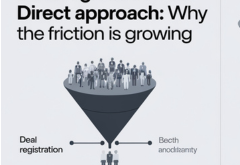MAIT, the apex body representing India’s IT hardware, training and R&D services sectors, today announced the findings of its Industry Performance Review for the financial year 2012-13. The annual MAIT Industry Performance Review – ITOPs, conducted by India’s leading market research firm IMRB International, is a survey of the IT hardware sector’s efforts to manage the business environment, gauge the market potential and consumer trends.
Key highlights of the study:
- The total PC sales between April 2012 and March 2013, combining desktop computers, notebooks and netbooks were at 11.31million (113.1 lakh) units, registering a growth of five per cent over the last fiscal.
- Internet penetration in the 22 cities was 65% among businesses and 35% among households.
- The sales of desktops stood at 6.77 million (67.7 lakh) units registering a growth of one per cent. Notebooks and Netbooks taken together recorded a consumption of 4.41 million (44.1 lakh) units, growing ten per cent over the last year.
- PC sales are expected to be around 12.11 million (121.1 lakh) units in FY 2013-14, a growth rate of eight per cent.
- Tablets are cannibalizing the PC market and registering a phenomenal growth of 424% in the 2nd consecutive year.
Commenting on the industry performance, Mr. J V Ramamurthy, President, MAIT, said, “The overall IT Hardware Industry scenario seems to be on a conservative side with most of the markets posting either a muted growth or decline. The year 2012-13 has been the year for Tablet PC with consumers preferring Tablet over PC as their replacement. The combination of basic functioning of a PC coupled with affordability is turning the tide favourably towards Tablet PC. That said, the SEC C Households which made a significant contribution last year for PC continues to put on a strong show registering an impressive growth of 67%. The industry is hopeful that the overall PC sales for 2013-14 will reach around 12.11 million units, registering a modest growth of 8%.
While Mr. Anwar Shirpurwala, Executive Director, MAIT said, “The overall growth of the Tablet industry is impressive, however, the decline in the growth of PC is a matter of concern which is growing by only 5% but it is also a reality. The growth of PC industry is crucial, as the country still has very low PC penetration.”
Some salient findings of the 2012-13 Study are given below.
The Notebook Market:
- The Notebook sales posted a muted growth rate of 10% this fiscal compared to 22% rate in the last year. This growth was driven by House-Hold (HH) segment that accounted for about 61% of the total Notebook sales and registered a growth of 14% during 2012-13 over the previous year.
- ‘SEC C’ continues to gain its stronghold in Notebook segment contributing around 29% of the notebook sales and posting a growth of 90% over last year. SEC A and B consumers seem to have restricted the purchase as they recorded a growth of 1% and 5% respectively over the last year.
- Notebook sales among Establishments during 2012-13 ended with a rise of 3%.The growth is mainly accounted by Government sector that recorded a rate of 38% over last year.
- Netbook sales stood at 0.96 lakh unit; the market has gone for a major decline of 68% over the previous year. The decline is underlined by both the HH and Business segments showing a negative growth of 74% and 64% respectively over previous year.
The Desktop Market:
- The Desktop market is driven only by HH segment as it grew at 14% over previous year. Household contribution to the Desktop market has increased from 53% in 2011-12 to 59% in 2012-13.
- The Businesses sector posted a negative growth of 13% over previous year majorly because of steep decline in large enterprisesand a declined growth of 53% over last year. However, SMB regained its composure and posted a positive growth of 49%.
- The top four metros, accounted around 28% of the total desktops purchased and the Class B cities accounted for 12% of the market. Consumption in top four metros went up by 3%, while in Class B cities it was a 5% decline. In smaller cities, the only positive growth driver posted a growth of 9% with contribution increasing from 59% to 60%.
The Tablet Market:
- Tablet PC witnessed a massive growth figure of 424%. The sales for 2012-13 stood at 1.9 million units as against 0.36 million units in 2011-12.
The Servers Market:
- During the year 2012-13, server sales registered a decline of 2% over the last financial year and it stood at 89,075 units in the current year.
The Peripherals Market:
- Overall printer sales continued to decline albeit marginallyat a rate of 1% during 2012-13 over the last fiscal year. The sales at 2012-13 stood at 2.93 million (29.3 lakh) units.
- Among printers, Laserjet printer is the only segment where sales grew positively and the growth rate was around 14% over last fiscal year. The consumption went to 1.57 million units from 1.38 million (13.8 lakh) units.
- Inkjet printer sales continued its downward spiral with a negative growth of 9% over last year. The sales figure stood at 10.83 million (108.3 lakh)owing to the decline of HH segment at 11% over last year. The establishment segments fell by 2%.
- Dot-matrix printer sales took a free fall as it posted a negative growth of 31% over last year. The sales figures cut short to 0.27 million (2.7 lakh) units in 2012-13 from 0.39 million (3.9 lakh) units in 2011-12.The UPS market sold at 2.53 million (25.3 lakh), at a decline of 1%. The decelerated growth in establishment segment was the main reason as it slipped at 16% over last year. The HH segment grew by 4% in the same period.
The Internet Entities:
- The number of active Internet entities posted 17.6 million in March 2013, growth of 11% over March 2012.
- Internet penetration in the 22 cities was 65% among businesses and 35% among households.
- Dial up contributed around 38% of the total internet connections in establishments as broadband contribution stood at 22%. The other mode of connections such as Leased lines and Data card contribution stood at 20% and 17% respectively.
Summary of Findings:
Total installs | Total Revenue (in Rs Crores) | |||||
Product | April 11– | April 12– | % Growth | April 11– | April 12– | % Growth |
Mar-12 | Mar-13 | Mar-12 | Mar-13 | |||
Computers | ||||||
| Desktop PCs | 67,11,911 | 67,69,423 | 1% | 13,527 | 13,468 | 0% |
| Notebooks | 37,24,746 | 43,08,543 | 16% | 10,318 | 11,804 | 14% |
| Netbooks | 2,97,775 | 96,335 | -68% | 374 | 121 | -68% |
| Servers | 90,699 | 89,075 | -2% | 1,637 | 1,610 | -2% |
Smartphone and Tablet PC | ||||||
| Smartphone | 95,36,000 | 1,52,20,725 | 60% | Not Available | ||
| Tablet PC | 3,63,057 | 19,03,356 | 424% | |||
Printers | ||||||
| Dot matrix | 3,92,785 | 2,72,934 | -30% | 263 | 183 | -30% |
| Inkjet | 11,90,676 | 10,83,645 | -9% | 176 | 158 | -10% |
| Laser | 13,81,771 | 15,72,294 | 14% | 729 | 825 | 13% |
Other Peripherals | ||||||
| Key boards# | 68,60,667 | 69,29,274 | 1% | Not Available | ||
| Monitors | 68,42,850 | 69,79,707 | 2% | |||
| UPS systems# | 25,54,779 | 25,29,231 | -1% | |||
# – There is wide variation in unit prices and hence the total revenue was not calculated.
Definitions:
- Top four Cities/Metros/Class A cities – Delhi, Mumbai, Chennai, Kolkata
- Next four Cities/Class B Cities – Bangalore, Hyderabad, Ahmedabad, Pune
- Class C Cities/Towns: Other Smaller Towns/Cities
- Internet entities – Entities are establishments/individuals with Internet connection; an entity could house multiple users.
- #SEC C is that section of the population that range from illiterates to those who have attended school up to 5-9 years.
To download the entire presentation, visit: www.mait.com/downloads/mait-itops2013.zip
About the study:
ITOPS is a syndicated end-user based study on the IT hardware market conducted by the eTechnology Group of IMRB International since 1996-97. The study is based on over 15,000 face-to-face interviews with end-users spread over 17 cities, with data projected to the ‘all India urban market’.
The MAIT-IMRB study involves data collection after the ‘last mile’ that the product travels, i.e. from the premise where the product is finally installed. It is therefore an accurate estimate of ‘what’ was bought, ‘by whom’, and for ‘what purpose’. Since the MAIT-IMRB study is based entirely on data collected from ‘users’, it is able to accurately estimate the large unorganised market as well as direct imports. It does not suffer from shortcomings of estimates based on shipment or supply which in addition to under or over-counting, may also reflect biases in perception of vendors and resellers.
With thirteen consecutive years of ITOPS data, the study is now able to closely track emerging segments such as small offices, home users, first time buyers, etc. and identify the role of key drivers for purchase such as the internet. By virtue of tracking the installed base built over the
years, and monitoring the extent of upgradation/ replacements taking place in the market, the study has been able to identify emerging business opportunities that promise to expand the market for IT products in India.
 Latest Technology News Today – Get Latest Information Technology Updates and Services Latest Technology News Today – Get Latest Information Technology Updates and Services
Latest Technology News Today – Get Latest Information Technology Updates and Services Latest Technology News Today – Get Latest Information Technology Updates and Services 









